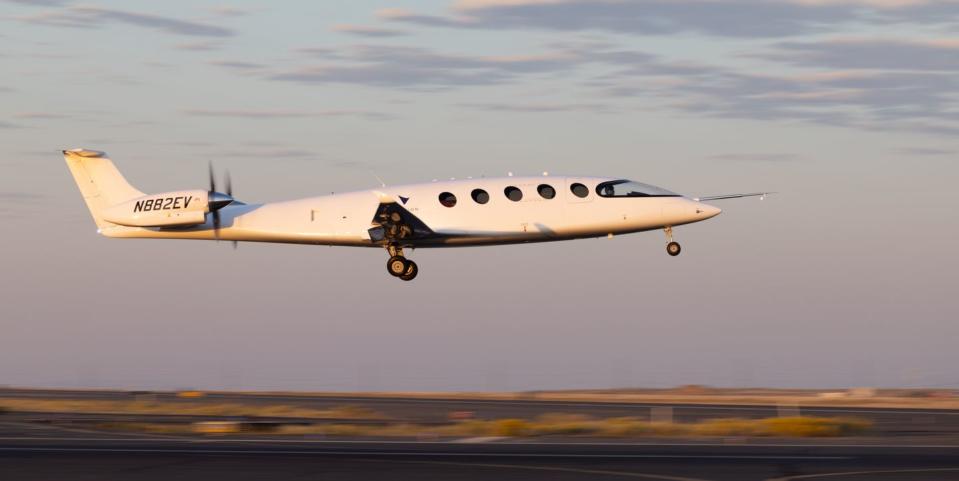Alice, the World’s First All-Electric Passenger Jet, Just Aced Her Maiden Flight

A new battery-powered commercial aircraft can carry nine passengers up to 250 miles.
Eviation is selling quieter battery-powered flight as something that can help communities.
Flight length is highly contextual, and electric planes are uniquely suited for short jumps.
Startup Eviation flew its medium-range electric airplane, Alice, for the first time last week, zipping over Grant County International Airport in rural eastern Washington. The airport is a retired military facility with a very long runway, making it uniquely suited for testing aircraft of all sizes. That has special value in the Pacific Northwest, which is a major hub for aircraft design.
“Alice lifted off at 7:10 a.m. from Grant County International Airport (MWH), flying for 8 minutes at an altitude of 3,500 feet,” the company says in a statement.
✈️ You love planes. So do we. Let’s fly together—join Pop Mech Pro.
Physicist Omer Bar-Yohay and his business partner Aviv Tzidon founded Eviation in 2015 in Israel, and the company is now based in Washington. It joins others like British Columbia’s Harbour Air in making strides toward electrifying commercial aircraft. It’s not clear yet that this transition will be possible for much larger passenger jetliners, but short- and medium-range planes could make the switch with much less pain.
Alice is designed for flights of up to 250 miles. The electric plane has a “maximum useful load” of up to 2,600 pounds, which Eviation says is enough to carry up to nine passengers at a time over these shorter distances. The company combined resources from more than half a dozen suppliers in order to build the sleek, futuristic airplane and its powertrain. And the sales pitch goes beyond the usual arguments for electrifying commercial air travel: because its planes are extremely quiet, Eviation believes it can introduce commercial air travel in locations where it was previously banned due to noise ordinances.
On its website, Eviation points out something interesting about the aviation industry: today, carbon emissions from commercial aviation make up just 2.5 percent of total global carbon emissions, but as other industries work to decarbonize, that number will grow at an increasing rate to reach 27 percent of total global carbon emissions by 2050. This is one reason why reducing carbon emissions to any extent can make a big difference; industries around the world are trying to trim back on emissions, and even modest improvements over time will be significant.
But aviation also faces special obstacles. On the category level, aircraft are split into two very broad groups. Some, like hot air balloons, work by being lighter than air. That means heated air, for example, has a lower density than the surrounding air and that makes it far lighter. But airplanes are heavier than air. They rely on powerful engines to propel them in order to generate lift, and those engines are heavy enough as it is.

Electrifying them requires even heavier supplies of batteries. The traditional fossil fuel BMW 5-series ranges from about 3,500 to 4,400 pounds; the electric Tesla Model S ranges from 4,300 to 5,000 pounds for a car about the same size. On the ground, that’s one thing; but in the sky, the difference can be critical to whether or not a plane can even take off.
This is where companies like Eviation enter. Flight length designations like short- and long-haul vary significantly by country—in the United States, the diagonal length of the continent falls right on one typical boundary of 3,000 miles. Many, many people make short- and medium-range jumps around the U.S. everyday for business. The culture around air travel of this kind may need to change in the future, but those changes will take time.
You Might Also Like

 Yahoo Finance
Yahoo Finance 